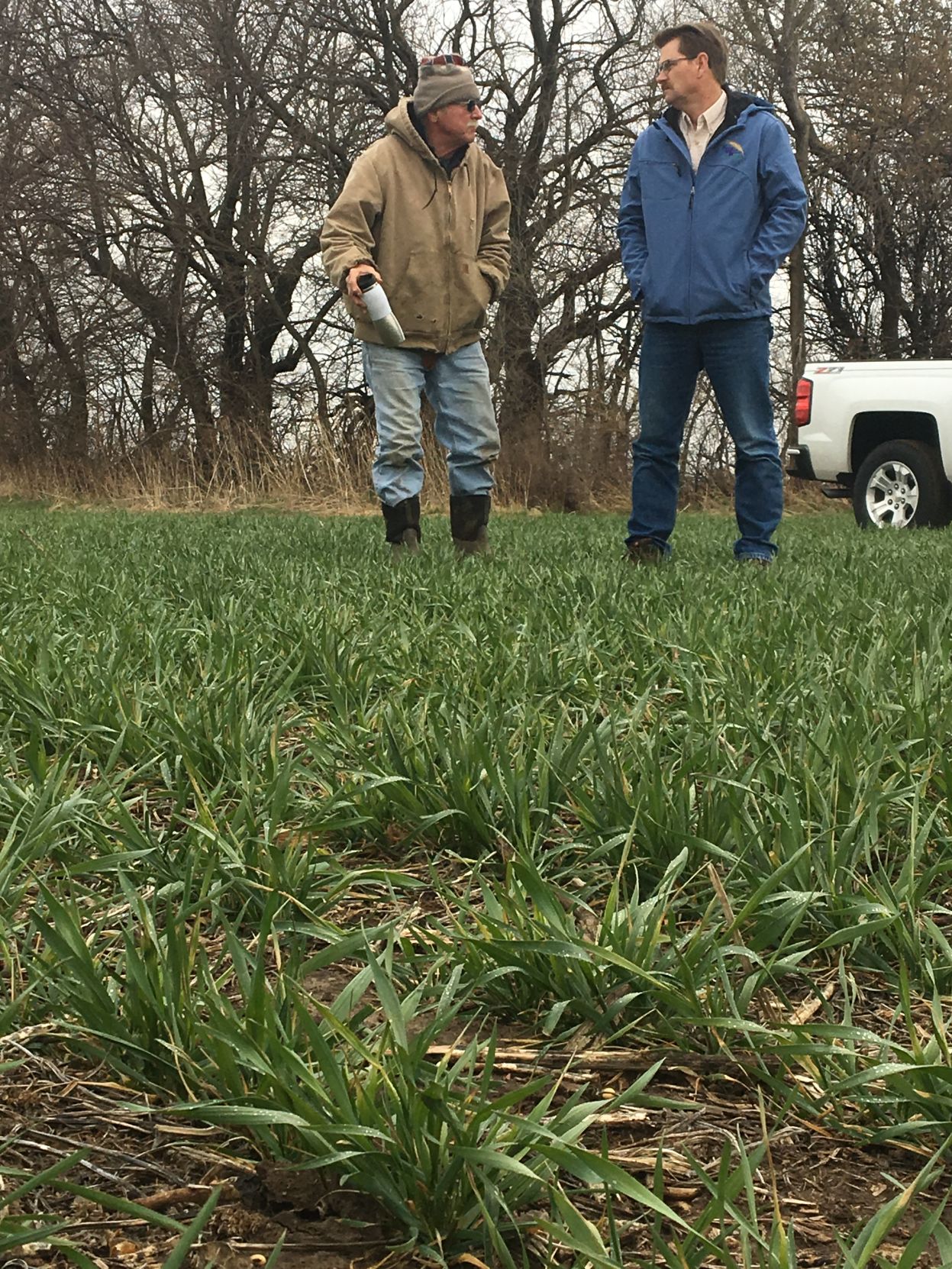In a normal year, the High Plains winter wheat crop would be much more mature at this point in the growing season.
This is anything but a normal year, however.
Earlier this week, Daryl Strouts, president and CEO of the Kansas Wheat Alliance, invited me to join him for a quick tour of central Kansas wheat fields. The KWA manages the release of Kansas State University wheat varieties.
Near Lindsborg, we met farmer-stockman Duane Johnson, who said the early wheat looked good. Wheat planted behind soybeans, however, doesn’t look so good. The area had been mostly dry from October to April, with a half-inch of sleet and 1.25 inches of rain in late March the only measurable precipitation to fall on the crop.
The wheat is at least two weeks behind—good for growers worried about freezing temperatures hurting the wheat. But not so good for wheat growers who were waiting for rain to topdress the crop with nitrogen. A check of wheat fields indicates that the growing point on Johnson’s farm is still below the soil surface. That’s a good place for it to be as freezing temperatures are supposed to hit the region this weekend.
Wheat acres are down in McPherson County, according to Johnson, a second-generation certified seed grower. His father, Sidney, started selling seed in the 1950s; Duane recalls bagging 100-pound burlap bags of seed by hand. “People weren’t buying seed last fall. 2016 and 2017 were pretty bad,” he said. “If the price were to pick up a little bit I can see wheat acres hold steady.”
Barton, McPherson County stops
Near Ellinwood, certified seed grower Mark Ricker agreed that wheat acres are down, with more farmers devoting acres to corn and soybeans. However, Ricker did sell out of certified seed last fall.
Ricker said area farmers are seeking locally adapted wheat varieties tolerant to low pH, and those that contain the Clearfield production system to manage grassy weeds. Strouts said there are varieties in the K-State pipeline that meet these qualifications but it will take a few years before there is enough quantity for commercial production.
The last stop of the tour was at the Don Neufeldt farm near Inman. Wheat acres are steady in this area. “Wheat is the go-to crop in this area,” Neufeldt said. “This has been as dry a year as we’ve had and there is still something here with the wheat.” Dryland corn and soybeans have not fared well in his area the last few years, he added.
In summary
Strouts said it’s too early to tell how the central Kansas wheat crop will fare. There are some good fields of wheat, and there are some bad looking fields of wheat.
“I don’t see anything that tells me this could be anything other than an average crop,” he said.
The Wheat Quality Council’s Hard Winter Wheat Tour will occur throughout Kansas April 30 to May 3. Strouts said it will be interesting to see what that tour shows.
In a state that has drought severity from “abnormally dry to severe,” according to the U.S. Drought Monitor—and with extreme cold forecast for the weekend—it could be even worse.
Bill Spiegel can be reached at 785-587-7796 or [email protected].



